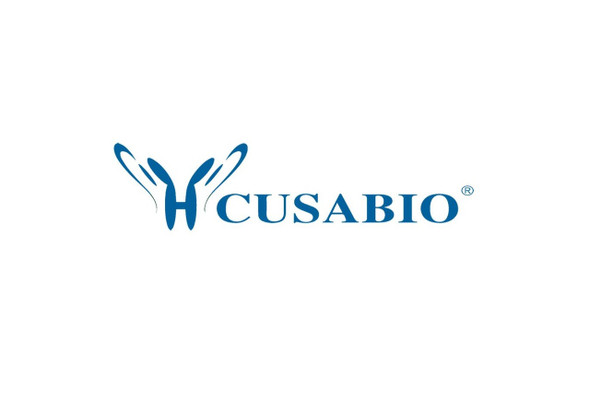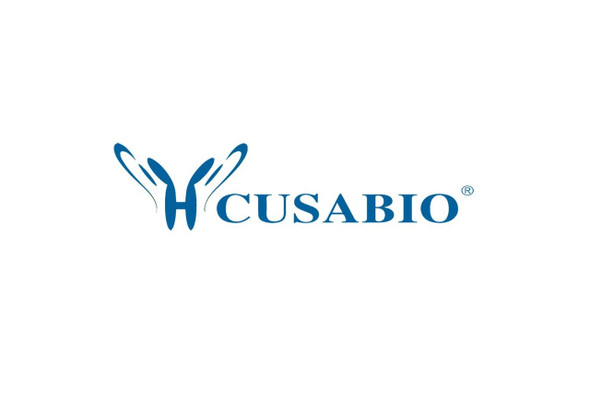Cusabio Bacillus subtilis Recombinants
Recombinant Bacillus subtilis Phosphocarrier protein HPr (ptsH) | CSB-EP362538BRJ
- SKU:
- CSB-EP362538BRJ
- Availability:
- 13 - 23 Working Days
Description
Recombinant Bacillus subtilis Phosphocarrier protein HPr (ptsH) | CSB-EP362538BRJ | Cusabio
Alternative Name(s): Histidine-containing protein
Gene Names: ptsH
Research Areas: Others
Organism: Bacillus subtilis (strain 168)
AA Sequence: AQKTFKVTADSGIHARPATVLVQTASKYDADVNLEYNGKTVNLKSIMGVMSLGIAKGAEITISASGADENDALNALEETMKSEGLGE
Source: E.coli
Tag Info: N-terminal 6xHis-SUMO-tagged
Expression Region: 2-88aa
Sequence Info: Full Length of Mature Protein
MW: 25.1 kDa
Purity: Greater than 90% as determined by SDS-PAGE.
Relevance: General (non sugar-specific) component of the phosphoenolpyruvate-dependent sugar phosphotransferase system (sugar PTS). This major carbohydrate active-transport system catalyzes the phosphorylation of incoming sugar substrates concomitantly with their translocation across the cell membrane. The phosphoryl group from phosphoenolpyruvate (PEP) is transferred to the phosphoryl carrier protein HPr by enzyme I. Phospho-HPr then transfers it to the permease (enzymes II/III). P-Ser-HPr interacts with the catabolite control protein A (CcpA), forming a complex that binds to DNA at the catabolite response elements cre, operator sites preceding a large number of catabolite-regulated genes. Thus, P-Ser-HPr is a corepressor in carbon catabolite repression (CCR), a mechanism that allows bacteria to coordinate and optimize the utilization of available carbon sources. P-Ser-HPr also plays a role in inducer exclusion, in which it probably interacts with several non-PTS permeases and inhibits their transport activity.
Reference: "Phosphoenolpyruvate:sugar phosphotransferase system of Bacillus subtilis: nucleotide sequence of ptsX, ptsH and the 5'-end of ptsI and evidence for a ptsHI operon."Gonzy-Treboul G., Zagorec M., Rain-Guion M.-C., Steinmetz M.Mol. Microbiol. 3:103-112(1989)
Storage: The shelf life is related to many factors, storage state, buffer ingredients, storage temperature and the stability of the protein itself. Generally, the shelf life of liquid form is 6 months at -20?/-80?. The shelf life of lyophilized form is 12 months at -20?/-80?.
Notes: Repeated freezing and thawing is not recommended. Store working aliquots at 4? for up to one week.
Function: General (non sugar-specific) component of the phosphoenolpyruvate-dependent sugar phosphotransferase system (sugar PTS). This major carbohydrate active-transport system catalyzes the phosphorylation of incoming sugar substrates concomitantly with their translocation across the cell membrane. The phosphoryl group from phosphoenolpyruvate (PEP) is transferred to the phosphoryl carrier protein HPr by enzyme I. Phospho-HPr then transfers it to the PTS EIIA domain.; FUNCTION
Involvement in disease:
Subcellular Location: Cytoplasm
Protein Families: HPr family
Tissue Specificity:
Paythway:
Form: Liquid or Lyophilized powder
Buffer: If the delivery form is liquid, the default storage buffer is Tris/PBS-based buffer, 5%-50% glycerol. If the delivery form is lyophilized powder, the buffer before lyophilization is Tris/PBS-based buffer, 6% Trehalose, pH 8.0.
Reconstitution: We recommend that this vial be briefly centrifuged prior to opening to bring the contents to the bottom. Please reconstitute protein in deionized sterile water to a concentration of 0.1-1.0 mg/mL.We recommend to add 5-50% of glycerol (final concentration) and aliquot for long-term storage at -20?/-80?. Our default final concentration of glycerol is 50%. Customers could use it as reference.
Uniprot ID: P08877
HGNC Database Link: N/A
UniGene Database Link: N/A
KEGG Database Link: KEGG
STRING Database Link: STRING
OMIM Database Link: N/A









